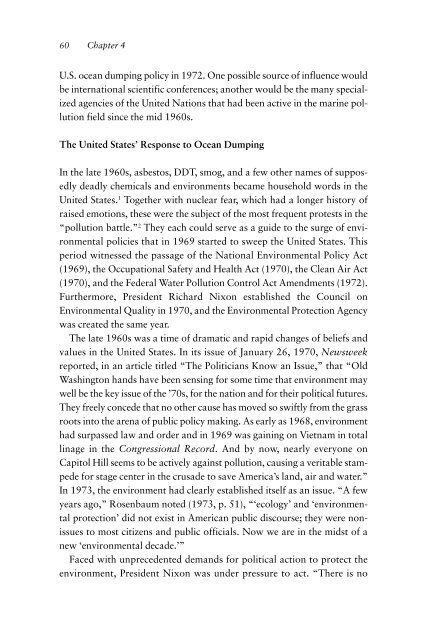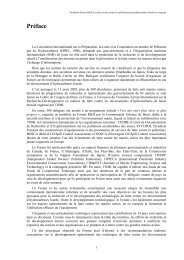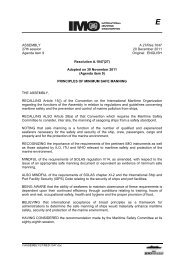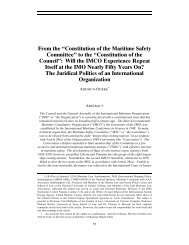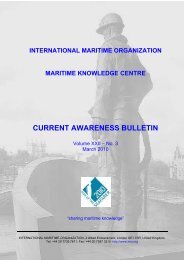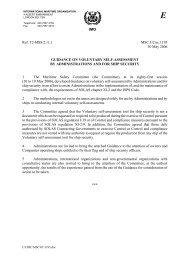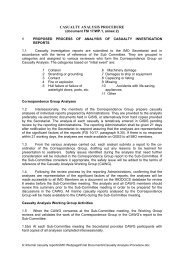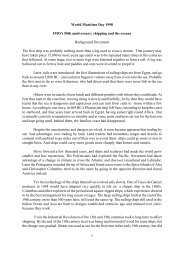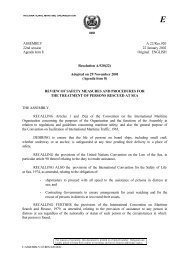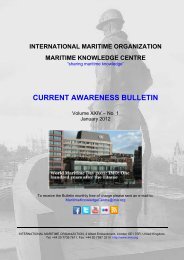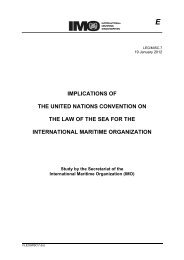Radioactive Waste Disposal at Sea: Public Ideas ... - IMO
Radioactive Waste Disposal at Sea: Public Ideas ... - IMO
Radioactive Waste Disposal at Sea: Public Ideas ... - IMO
You also want an ePaper? Increase the reach of your titles
YUMPU automatically turns print PDFs into web optimized ePapers that Google loves.
60 Chapter 4<br />
U.S. ocean dumping policy in 1972. One possible source of influence would<br />
be intern<strong>at</strong>ional scientific conferences; another would be the many specialized<br />
agencies of the United N<strong>at</strong>ions th<strong>at</strong> had been active in the marine pollution<br />
field since the mid 1960s.<br />
The United St<strong>at</strong>es’ Response to Ocean Dumping<br />
In the l<strong>at</strong>e 1960s, asbestos, DDT, smog, and a few other names of supposedly<br />
deadly chemicals and environments became household words in the<br />
United St<strong>at</strong>es. 1 Together with nuclear fear, which had a longer history of<br />
raised emotions, these were the subject of the most frequent protests in the<br />
“pollution b<strong>at</strong>tle.” 2 They each could serve as a guide to the surge of environmental<br />
policies th<strong>at</strong> in 1969 started to sweep the United St<strong>at</strong>es. This<br />
period witnessed the passage of the N<strong>at</strong>ional Environmental Policy Act<br />
(1969), the Occup<strong>at</strong>ional Safety and Health Act (1970), the Clean Air Act<br />
(1970), and the Federal W<strong>at</strong>er Pollution Control Act Amendments (1972).<br />
Furthermore, President Richard Nixon established the Council on<br />
Environmental Quality in 1970, and the Environmental Protection Agency<br />
was cre<strong>at</strong>ed the same year.<br />
The l<strong>at</strong>e 1960s was a time of dram<strong>at</strong>ic and rapid changes of beliefs and<br />
values in the United St<strong>at</strong>es. In its issue of January 26, 1970, Newsweek<br />
reported, in an article titled “The Politicians Know an Issue,” th<strong>at</strong> “Old<br />
Washington hands have been sensing for some time th<strong>at</strong> environment may<br />
well be the key issue of the ’70s, for the n<strong>at</strong>ion and for their political futures.<br />
They freely concede th<strong>at</strong> no other cause has moved so swiftly from the grass<br />
roots into the arena of public policy making. As early as 1968, environment<br />
had surpassed law and order and in 1969 was gaining on Vietnam in total<br />
linage in the Congressional Record. And by now, nearly everyone on<br />
Capitol Hill seems to be actively against pollution, causing a veritable stampede<br />
for stage center in the crusade to save America’s land, air and w<strong>at</strong>er.”<br />
In 1973, the environment had clearly established itself as an issue. “A few<br />
years ago,” Rosenbaum noted (1973, p. 51), “‘ecology’ and ‘environmental<br />
protection’ did not exist in American public discourse; they were nonissues<br />
to most citizens and public officials. Now we are in the midst of a<br />
new ‘environmental decade.’”<br />
Faced with unprecedented demands for political action to protect the<br />
environment, President Nixon was under pressure to act. “There is no


